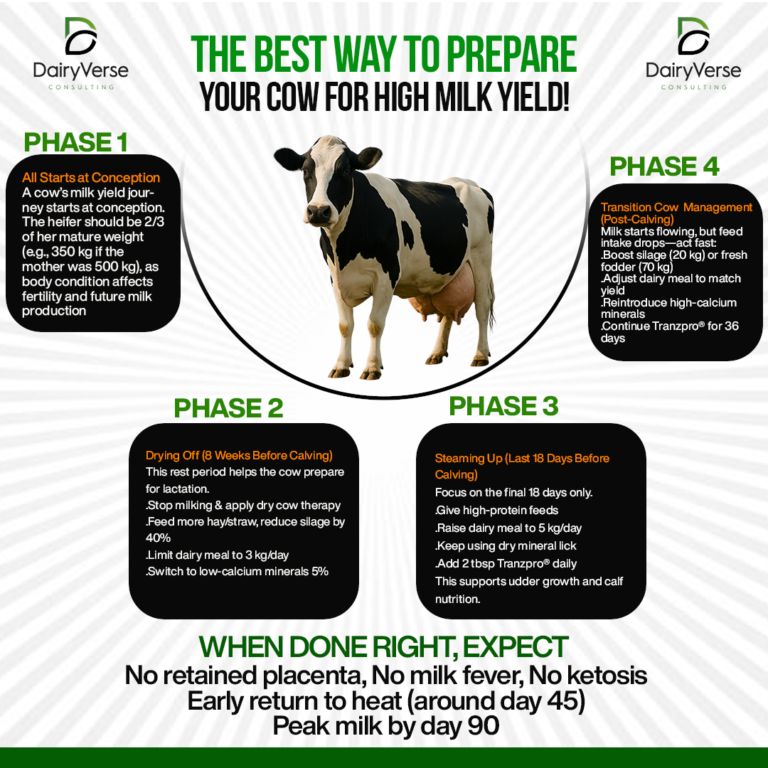Why Does Milk Curdle? Understanding the Causes and Solutions for Dairy Farmers
Milk curdling, also known as “kuganda” in some regions, is a common issue that affects milk quality and can lead to significant losses for dairy farmers. Curdled milk is often unusable for drinking or processing, which impacts both farmers and consumers. Here, we’ll explore the primary causes of milk curdling, how these factors affect milk quality, and the steps farmers can take to prevent it.

1. Mastitis: Udder Infections that Compromise Milk Quality
Mastitis is an infection of the cow’s udder, which can significantly impact milk quality. This condition increases the somatic cell count (SCC) in milk, mainly consisting of white blood cells, which can cause milk proteins to break down prematurely. As a result, milk from cows with mastitis is more likely to curdle, develop an off-flavor, and have a shorter shelf life.
How to Prevent and Manage Mastitis:
- Good Hygiene Practices: Clean the udder thoroughly before milking to reduce bacterial contamination.
- Regular Health Checks: Monitor cows for signs of mastitis, such as swelling, redness, or changes in milk appearance.
- Prompt Treatment: Treat infections quickly to avoid long-term damage to the udder and minimize the impact on milk quality.
2. Low Protein Levels in Cow Diets
A balanced diet is crucial for maintaining high-quality milk. If a cow’s diet is low in protein, the milk it produces may lack stability, making it prone to curdling. Protein is essential for the structural integrity of milk, and when it’s deficient, milk becomes less resistant to coagulation.
How to Ensure Adequate Protein Intake:
- Balanced Feed: Provide a diet rich in protein through high-quality forage, grains, and supplements.
- Monitor Feed Quality: Ensure that the feed is fresh and free from contaminants that might lower its nutritional value.
- Consult a Nutritionist: Work with a dairy nutritionist to formulate a diet that meets the protein requirements of your herd.
3. Advanced Pregnancy and Hormonal Changes
As a cow enters the later stages of pregnancy, hormonal changes naturally occur to prepare the body for calving. These hormonal shifts can affect milk composition, altering the balance of fats and proteins, which can make the milk more likely to curdle. Milk produced in advanced pregnancy often has a different texture and stability.
Managing Milk from Pregnant Cows:
- Monitor Production Stages: Be aware of the pregnancy stages of your cows and understand how this might impact milk quality.
- Selective Use of Milk: Milk from cows in late pregnancy can be used for other purposes or mixed with milk from other cows to minimize curdling risks.
4. Inadequate Cooling and Poor Storage Practices
One of the most common causes of milk curdling is improper cooling and storage. Bacteria multiply rapidly in warm milk, leading to fermentation, which produces lactic acid. This acid buildup causes the milk to curdle. Immediate cooling after milking is essential to maintain milk freshness.
Best Practices for Milk Cooling and Storage:
- Immediate Cooling: Milk should be cooled to below 4°C (39°F) as soon as possible after milking.
- Use Proper Storage Containers: Store milk in sanitized, airtight containers to prevent contamination and minimize exposure to air, which promotes spoilage.
- Monitor Cooling Equipment: Regularly check that cooling systems are functioning properly and maintaining the necessary temperatures.
5. Chemical Residues
Sometimes, residues from antibiotics, cleaning agents, or sanitizers used in the milking process make their way into the milk. These residues can disrupt milk’s natural balance, leading to curdling or affecting its taste and overall quality.
How to Avoid Chemical Residue Contamination:
- Follow Medication Withdrawal Times: After treating cows with antibiotics or other medications, observe the recommended withdrawal period before milking.
- Thoroughly Rinse Equipment: After cleaning and sanitizing, make sure all milking equipment is rinsed well to remove any traces of chemicals.
- Use Approved Cleaning Agents: Stick to cleaning products that are safe and approved for use in dairy operations.
Conclusion
Understanding the causes of milk curdling and how to prevent it is essential for dairy farmers who want to produce high-quality, fresh milk. By managing udder health, providing balanced nutrition, handling milk carefully, and following good storage practices, farmers can greatly reduce the risk of milk curdling. Remember, maintaining milk quality is not just about improving profitability but also about delivering a safe, high-quality product to consumers.
Understand what makes milk appear watery; Click here.







